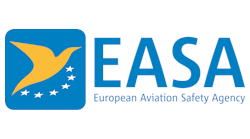The FAA has created a variety of products and tools to address human factors within your organization. These tools have high potential to reduce errors, aircraft damage and employee injuries. The tools help ensure continuing efficient delivery of ground support services.
To determine if you are taking advantage of these FAA products you can answer yes or no to the questions below. Become a “yes man” to using FAA human factors information.
Have you visited mxfatigue.com or faasafety.gov?
All of the FAA human factors products are available at the shortened Web site address: mxfatigue.com. (See Figure 1.) If you have not been there, you are missing out on a number of free, high value human factors resources.
Another great source of information is www.faasafety.gov. Maintained by the FAA Safety Team, this site offers many online courses, access to CDs and information about safety events in your area.
Are you using FAA human factors training materials?
There are plenty of widely used FAA human factors training products. The Maintenance Human Factors Presentation System (MHFPS) (See Figure 2.) offers 150 PowerPoint slides, 12 short videos, and 50 animated files that can comprise an entire human factors training program to be delivered by your instructor. Many human factors training consultants have adopted the FAA human factors training materials. You may be using it without even knowing its origin. Since 2008, the FAA has sent out more than 12,000 MHFPS in response to individual email requests from the human factors Web site.
The FAA Fatigue Awareness Training is an interactive Web-based training program. Average time to complete the fatigue awareness training is about two hours. It includes an online end-of-course test and will issue a completion certificate. Most users have taken the training via the Web, but many organizations worldwide have loaded the training directly onto their corporate Web sites.
The award-winning video, Grounded, (See Figure 3.) is a fictional story about a fatigued manager. Available on the Web site, on DVD and even on YouTube, FAA has lost count on the number of viewers. It is integrated with the fatigue countermeasure training.
In 2011 and 2012 an estimated 20,000 visitors to www.FAAsafety.gov and completed the fatigue training.
Are you using the human factors support materials?
Training is a key ingredient that affects an employee's knowledge and behavior. But training is not enough. Training must be reinforced with other organizational programs and promotions. FAA has put together some products that can help.
The mxfatigue.com has a place to download or order a variety of support materials. For example, there are 12 (See Figure 4.) posters to remind workers about fatigue. The posters are pdfs and ready to go to your local printer. For a few hundred dollars many organizations can produce a variety of colorful and informative posters throughout the organization.
The Web site has a sleep diary and instructions to help workers assess their own two-week sleep habits. In many cases this is a bold awakening (not a pun) to the fact that one is sleep deprived. The guidance material tells the worker what to do about fatigue.
The online sleep assessment tool asks 10 questions, regarding sleep and work over a three-day period. The bio-mathematical model instantly tells a worker his or her estimated level of fatigue and fitness for duty. While this tool has been on line for nearly a year, during 2013 FAA plans to simplify the input and the output advice to the user.
Have you used the guidance material?
Personnel and their managers are not excited about reading technical reports and such materials. However, a research and development program certainly must document their activity. Some of that documentation may be a bit scientific. The current FAA team has worked hard to make all reports, newsletters and other publications as readable and practical as possible. It’s all on the Web site. That site has more human factors materials than any other source worldwide. Nearly 10,000 users per month is testimony to the value of the site and the information therein.
Are you tracking errors?
Human factors issues are not the sole purpose of voluntary reporting systems. But it is undisputable that human factors contribute to more than 80 percent of events. Voluntary reporting such as the FAA Aviation Safety Action Program (ASAP) helps individuals and organizations document the many small events that may be indicative of increasing risk. Such programs are an important part of a safety culture. Self-reports are often excused from company and/or FAA action. The FAA has worked hard to help ensure that event investigations document the human factors that may be contributing factors.
Have you tried to justify the costs of your safety interventions?
Human factors programs are historically the first places managers cut when budgets are tight. Today, however, enlightened managers recognize the financial cost and safety risk associated with human factors. Of course, the corporate financial managers often need a reminder.
The FAA formalized a process and created support tools to help managers to calculate a safety and financial return-on-investment for human factors interventions. During 2012, a number of organizations used the ROI software. (Available on the Web site, but also see "How To Prove The Value Of Safety," Ground Support Worldwide, October 2011.)
Some of the demonstrated returns were in the 1,000 percent-plus range. ROI software users have commented on the ease of use and the quality of the embedded instructions. No one felt that they needed an MBA to translate the financial process into easy estimates and calculations.
About the Author: Dr. Bill Johnson is the chief scientific and technical advisor for Maintenance Human Factors at the FAA. He spent more than 25 years in the private sector as a scientist and engineering executive prior to joining the FAA.



